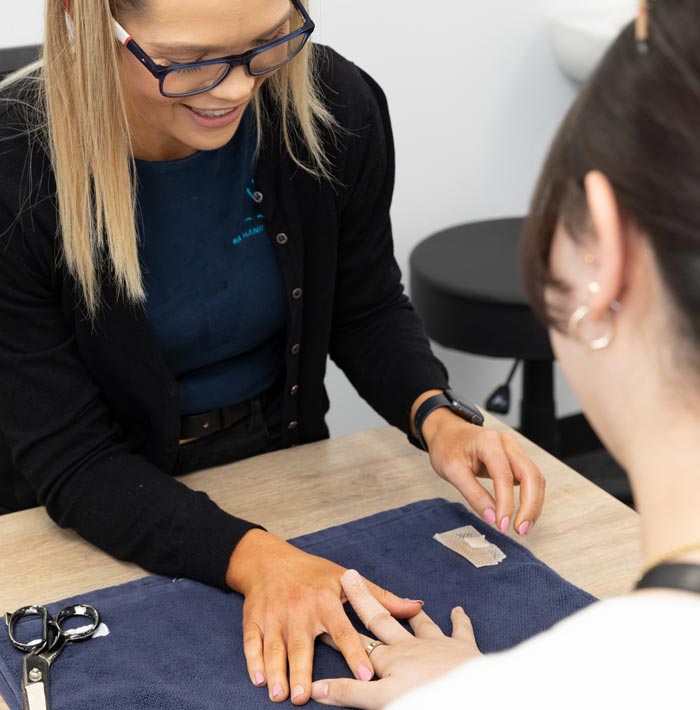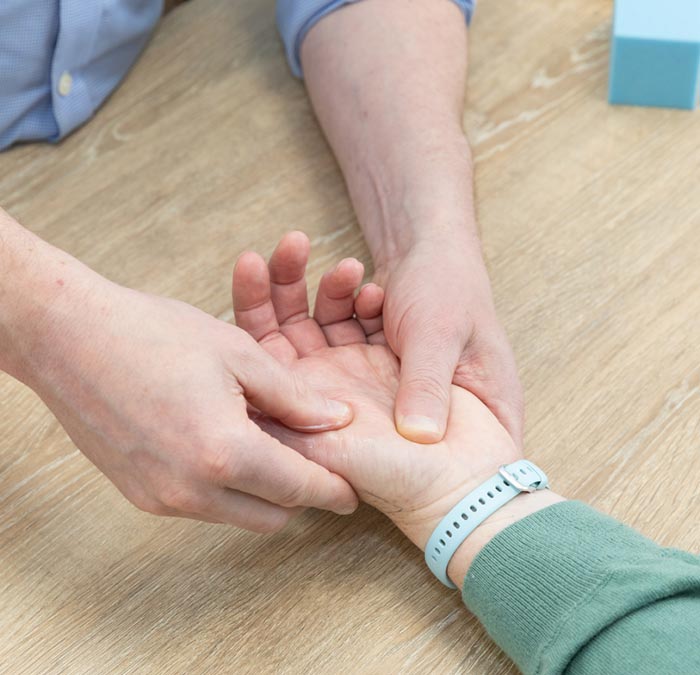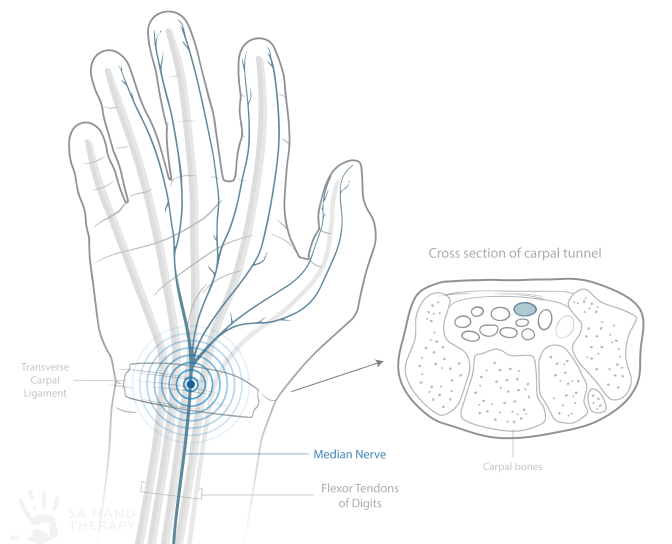A face-to-face consultation will allow for thorough investigation.
For Clarity and a Professional Assessment,
Book a Time to See Us

Common Conditions

Carpal tunnel syndrome involves a compression or swelling of the median nerve within the carpal tunnel. The carpal tunnel is formed by wrist bones and soft tissue, creating a semi-circular space. The tunnel acts to protect and contain 2 tendons to each finger and one tendon to the thumb (9 tendons in total), as well as the median nerve.
Nerve irritation at this site contributes to symptoms of altered sensation and tingling, pain and weakness to the structures in the hand normally supplied by the median nerve. An increase in load to the tendons or by additional fluid/inflammation in this space can cause these median nerve symptoms.
Carpal tunnel syndrome is more likely to occur in people with chronic health conditions, such as diabetes and rheumatoid arthritis, or during pregnancy when fluid retention is common (Genova et al., 2020). Wrist position and repetitive gripping tasks can also contribute to the development of carpal tunnel syndrome.

Symptoms of carpal tunnel syndrome can be very effectively managed and treated. If mild nerve irritation is present, symptoms can be expected to improve over a few sessions of hand therapy.
Chronic symptoms of carpal tunnel can lead to progressive muscle weakness as insufficient nutrition reaches structures over the thumb and hand. In these cases, a combination of surgical and therapy-based treatment is commonly needed. If indicated we can direct your care to an Adelaide surgeon of best fit for you and any onward referrals accordingly.
The Median nerve travels the length of your arm from your neck to finger tips. Moving your neck to one side can cause a small amount of movement in your nerve at the carpal tunnel.
Repetitive use of a computer mouse holding your wrist in a bent position, is known as one risk factor for the development of carpal tunnel syndrome (Jovanović, S., & Šimunič, B, 2021).
Reference:
Genova, A., Dix, O., Saefan, A., Thakur, M., & Hassan, A. (2020). Carpal tunnel syndrome: a review of literature. Cureus, 12(3). Doi:10.7759/cureus.7333
Jovanović, S., & Šimunič, B. (2021). Effect of ergonomic Armrest® forearm support on wrist posture related to carpal tunnel pressure during computer mouse work. International Journal of Industrial Ergonomics, 86, 103220.
While these are general examples, our hand therapists will help match solutions best suited to your condition and specific needs.
